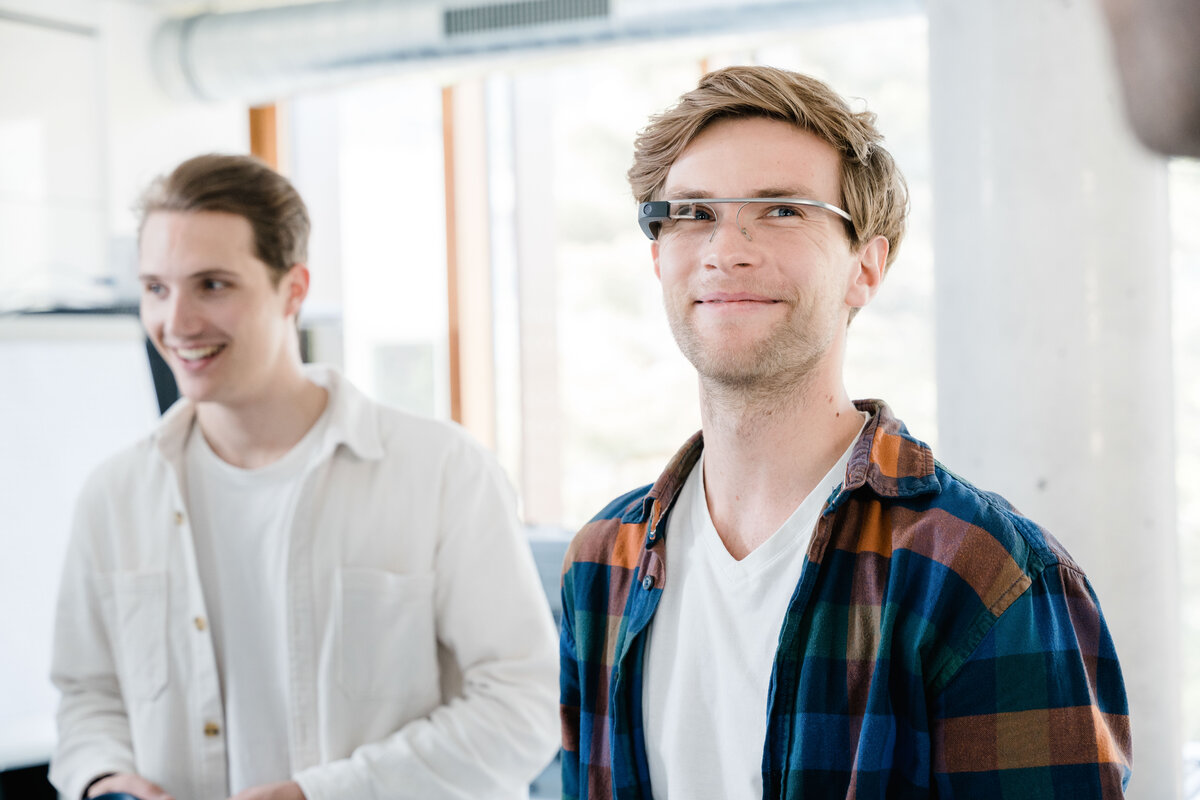How the Digital Experience Lab tracks what draws focus
- 28.09.2025
- Research

Students in the Digital Experience Lab at FH Kufstein Tirol test user reactions using eye tracking.
At the Digital Experience Lab at the University of Applied Sciences Kufstein Tirol, students use state-of-the-art technology to develop new ideas for digital marketing - setting standards that show how companies can reach their target groups in the future.
How is Artificial Intelligence (AI) changing the way we perceive and design digital content? Students at the Digital Experience Lab at the University of Applied Sciences Kufstein Tirol are addressing this question. Under the direction of Lukas Hartleif, MA, a marketing lecturer at the Kufstein University of Applied Sciences, they are developing practical solutions for companies – and exploring how human perception and AI can be combined.
HIGH-TECH WITH A HUMAN TOUCH
The core of the lab is an eye-tracking system that records where test subjects look on the screen. To do this, students first calibrate the participants' eye movements: they follow a dot moving across the screen with their eyes. This allows them to precisely measure eye movements and visualize which areas of a website or advertisement actually attract attention.
The stationary eye tracker is supplemented by a mobile eye tracker for use at trade fairs or in everyday environments. With the iMotions software, students can create and evaluate complex experimental designs.
The user experience (UX) is at the heart of all considerations. This basically refers to the entire user experience that people have when interacting with a product, system, or service. In this project, UX specifically refers to the overall experience of users when interacting with digital content. “We want to look at user experience not only from a human perspective, but also understand how content can be optimized for AI search engines in the future,” explains Hartleif. It is precisely this connection that is a unique selling point of the lab.
LOOKING BEYOND HUMAN PERSPECTIVES, WE ALSO WANT TO UNDERSTAND HOW CONTENT CAN BE OPTIMIZED FOR AI SEARCH ENGINES IN THE FUTURE.
Lukas Hartleif
Laboratory Manager
PRACTICAL AND INTERDISCIPLINARY
The projects in the lab are developed in close collaboration with companies. They follow a clear process: after a briefing, the students develop a study design, recruit test subjects (usually 12 to 15 participants are sufficient), conduct the survey, and evaluate the results - often with technical support from the software partner Imotions.
“Often, the fresh perspective of students is enough to gain valuable new insights,” says Hartleif. Companies that have been working on their websites or campaigns for a long time tend to develop a certain blind spot over time: this is exactly where the lab can provide crucial impetus.
SOS CHILDREN'S VILLAGES SUCCESS STORY
One example of a successful project is the collaboration with SOS Children's Villages:
Students used eye tracking to analyze the donor journey on the website and discovered that the donation compass - a central navigation element - was not prominently placed. The results were incorporated into the relaunch of the site, making the donation process much more intuitive. “Both the students and the company were enthusiastic about the added value,” says Hartleif.
LINK BETWEEN UNIVERSITIES AND BUSINESS
The lab offers companies easy access to innovative work at the interface between user experience and AI. The practical projects show how theoretical knowledge and real-world problems can be linked – and at the same time create an ideal learning environment for students. This results in qualified young professionals for the region who are curious and responsible as they look to the digital future.
LOOKING FOWARD
The lab is currently focusing on combining generative AI and user experience research. For Hartleif, one thing is clear: “The exciting thing is that we don't know exactly where developments will lead – but we want to use the lab to create a place where students and companies can work together to find out how the digital experiences of tomorrow will be shaped.”
Links:
- Digital Experience Lab | Science Lab
- Marketing & Communication Management | ft
- Digital Marketing | ft
- Eye tracking study optimizes SOS-Kinderdorf website | News
